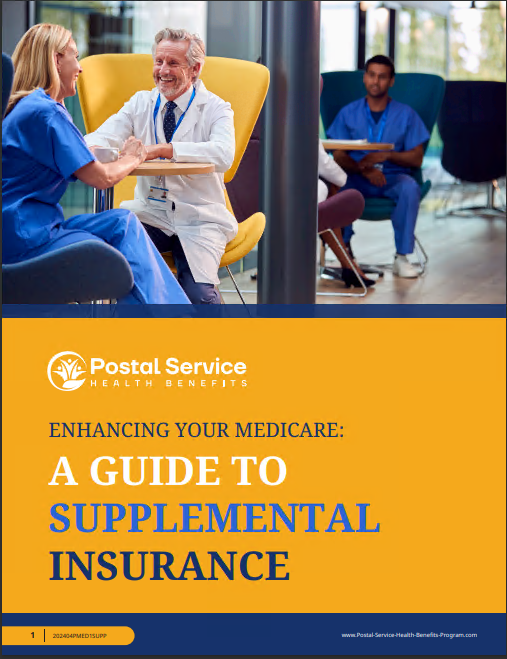Key Takeaways
-
The introduction of the Postal Service Health Benefits (PSHB) Program in 2025 will transform health coverage for USPS employees and retirees. Knowing what’s changing will help you adapt smoothly.
-
Medicare integration, plan comparisons, and timely actions are essential for navigating this transition without disruptions.
What Is the PSHB Program?
The Postal Service Health Benefits (PSHB) Program is a new health benefits system created specifically for USPS employees, retirees, and their eligible family members. It will officially replace the Federal Employees Health Benefits (FEHB) Program for postal workers starting January 1, 2025.
This change comes as part of the 2022 Postal Service Reform Act, which aims to address the financial challenges faced by USPS while ensuring that employees and retirees continue to receive comprehensive health benefits. The PSHB program is designed to provide tailored plans, streamlined Medicare integration, and cost efficiency for USPS and its members.
Why Is This Change Happening?
The PSHB program’s implementation is rooted in the need for postal-specific health benefits that better align with the unique needs of USPS employees and retirees. Additionally, the integration of Medicare for eligible members is expected to:
-
Lower Healthcare Costs: Aligning with Medicare reduces the overall expenses for retirees and USPS.
-
Improve Financial Stability: By creating a separate system for USPS, the program alleviates some financial burdens from the federal government.
-
Enhance Benefit Options: Members can expect plans tailored to their needs while maintaining comprehensive coverage.
Key Dates and Deadlines
To ensure a seamless transition, it’s crucial to mark these important dates on your calendar:
-
Open Season: November 11 – December 9, 2024. This is your window to select or confirm your PSHB plan.
-
Program Launch: January 1, 2025. Your new health benefits coverage begins.
-
Medicare Part B Enrollment: If required, you must enroll in Medicare Part B before January 1, 2025, to avoid losing your PSHB coverage.
Missing these deadlines could lead to coverage lapses or penalties, so it’s vital to stay proactive.
Who Needs to Take Action?
The PSHB transition affects several groups differently. Here’s how:
-
Current Employees: If you’re a USPS employee enrolled in FEHB, you’ll automatically be transitioned to a comparable PSHB plan unless you choose to make changes during Open Season.
-
Retirees and Their Families: Medicare-eligible retirees and dependents must enroll in Part B to maintain PSHB coverage. If you retired before January 1, 2025, and are not enrolled in Part B, you may be exempt from this requirement.
-
Non-Medicare Eligible Members: Your transition will be automatic, but you should still review plan options during Open Season to confirm the best fit for your needs.
Medicare Integration: What It Means for Retirees
If you’re a Medicare-eligible USPS retiree, the integration of Medicare Part B into PSHB plans is one of the most significant changes. Here’s how it works:
Mandatory Enrollment for Medicare Part B
Most retirees will need to enroll in Medicare Part B to maintain their PSHB coverage. This requirement is designed to coordinate benefits effectively and lower out-of-pocket costs. For 2025, the monthly premium for Part B will be $185, with an annual deductible of $257.
Coordination of Benefits
Your PSHB plan will work alongside Medicare Part B to cover a broader range of services, reducing your overall expenses. Medicare will act as the primary payer, while PSHB serves as the secondary payer, covering additional costs such as copayments and deductibles.
Exceptions
If you retired before January 1, 2025, and are not currently enrolled in Medicare Part B, you may not be required to enroll. Be sure to check your specific situation.
Preparing for Open Season: What You Should Do
Open Season is your opportunity to take control of your health benefits. Follow these steps to ensure you’re ready:
-
Review Your Current Coverage: Start by examining your existing FEHB plan. Compare it to the new PSHB options to identify which plan best meets your needs.
-
Attend Informational Sessions: USPS and the Office of Personnel Management (OPM) will offer resources, webinars, and Q&A sessions to help you understand the new system.
-
Confirm Medicare Part B Enrollment: If applicable, ensure you’re enrolled in Part B before the deadline to avoid losing your PSHB coverage.
-
Evaluate Plan Options: Consider factors like premiums, deductibles, provider networks, and prescription drug coverage to choose a plan that fits your health and budget requirements.
-
Finalize Your Choice During Open Season: Use the enrollment window to confirm or make changes to your plan.
How PSHB Plans Differ from FEHB Plans
While PSHB plans will have similarities to current FEHB offerings, there are key differences worth noting:
-
Postal-Specific Coverage: PSHB plans are tailored to the needs of USPS employees and retirees, potentially offering more relevant benefits.
-
Medicare Integration: For Medicare-eligible members, PSHB plans will coordinate with Part B for comprehensive coverage.
-
Streamlined Costs: By integrating with Medicare, PSHB aims to reduce out-of-pocket expenses for retirees.
Common Questions About the Transition
Will I Be Automatically Enrolled in PSHB?
Yes, if you’re currently enrolled in FEHB, you’ll be auto-enrolled in a comparable PSHB plan. However, it’s still important to review your options and confirm your selection during Open Season.
What If I Don’t Enroll in Medicare Part B?
Failing to enroll in Part B when required could result in losing your PSHB coverage. Ensure you meet all eligibility requirements to maintain your benefits.
Can I Keep My Current Doctors?
Most PSHB plans will have networks similar to FEHB plans, but it’s a good idea to check whether your preferred providers are covered.
Life After 2025: What to Expect
Once the PSHB program is in place, you can anticipate several ongoing benefits and processes:
-
Annual Open Seasons: Each year, you’ll have the chance to review and update your plan if your needs change.
-
Continuous Medicare Coordination: For eligible retirees, the integration between PSHB and Medicare Part B will provide streamlined and cost-effective coverage.
-
Enhanced USPS Support: USPS and OPM will continue offering resources and assistance to ensure a smooth experience.
Tips for Navigating the Transition
-
Start Early: Don’t wait until the last minute to review your options or enroll in Medicare Part B.
-
Ask Questions: Reach out to USPS HR or attend informational sessions if you need clarification.
-
Stay Organized: Keep track of deadlines and documents to avoid any disruptions to your coverage.
-
Consider Your Budget: Account for Medicare Part B premiums and other costs when planning your finances.
Moving Forward with Confidence
The transition to the Postal Service Health Benefits Program marks a significant change, but it’s also an opportunity to optimize your healthcare coverage. By staying informed, taking proactive steps during Open Season, and understanding how Medicare integration works, you’ll be well-prepared for the future. Don’t wait—start planning today to make the most of your benefits in 2025 and beyond.







